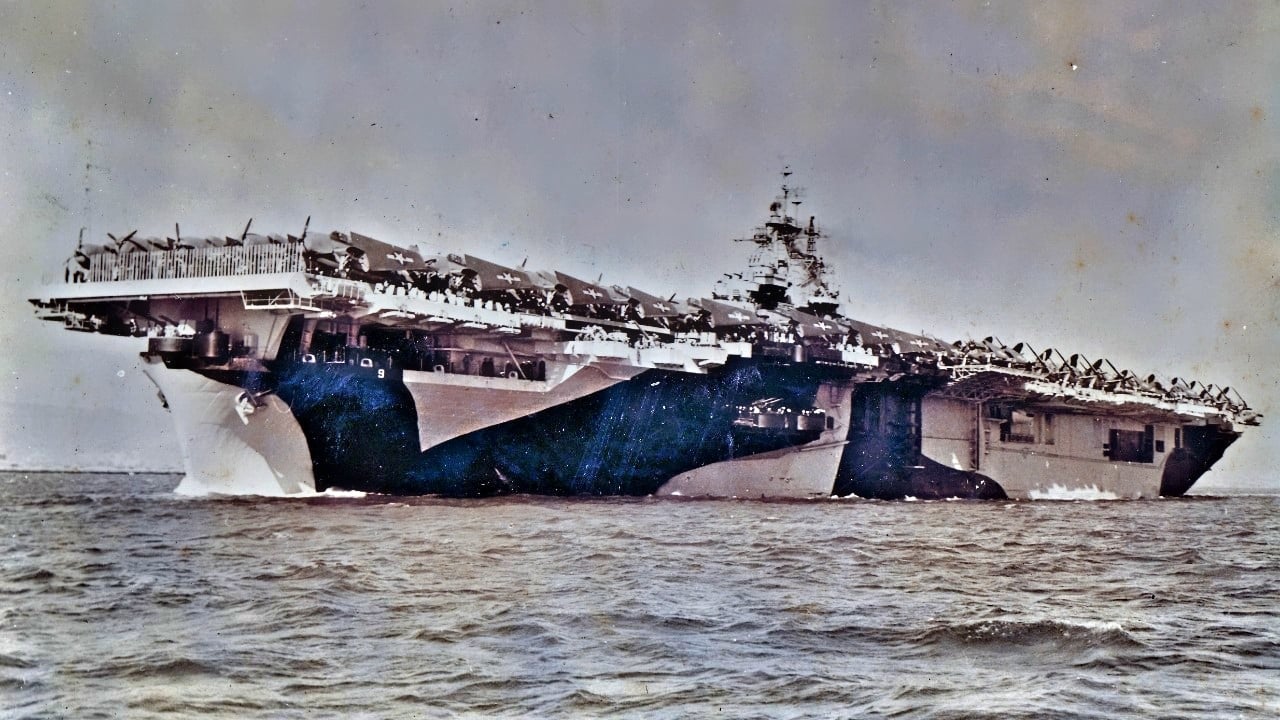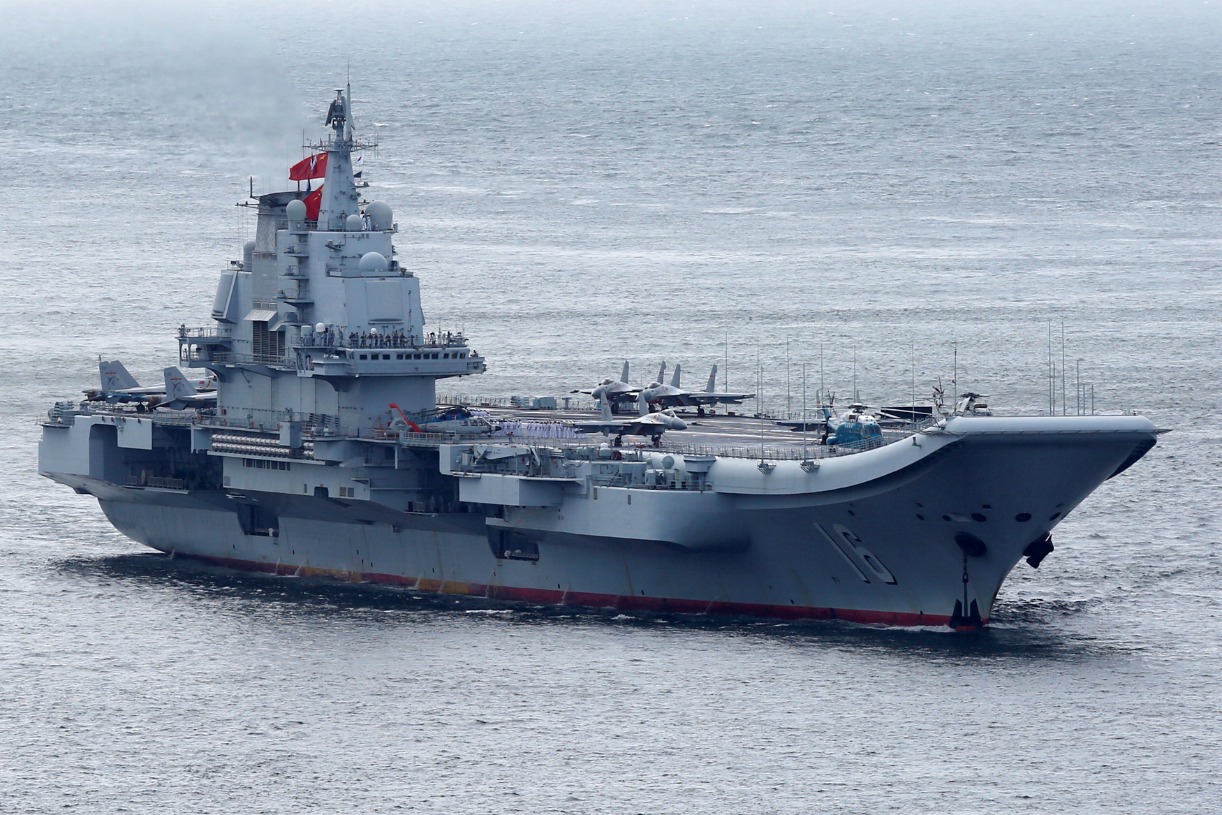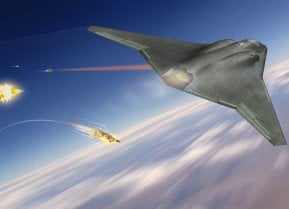Floating Coffins at Sea: 5 Worst Aircraft Carriers of in Naval History
Aircraft carriers are often symbols of national power, but not all of them live up to the hype. Some, like Russia's Admiral Kuznetsov, are notorious for their reliability issues, requiring constant repairs and even tugboat escorts.
What You Need to Know: Aircraft carriers are often symbols of national power, but not all of them live up to the hype. Some, like Russia's Admiral Kuznetsov, are notorious for their reliability issues, requiring constant repairs and even tugboat escorts.

-China's Liaoning and Shandong, both Kuznetsov-class carriers, lack the modern capabilities of their U.S. counterparts, such as catapult-assisted launch systems, and have limited endurance. Thailand's Chakri Naruebet, the world’s smallest carrier, struggles with limited aircraft capacity, especially since the retirement of its Harrier fleet.
-Finally, Italy’s Giuseppe Garibaldi, while capable, is outdated and significantly underwhelming compared to modern supercarriers. These five vessels showcase the challenges of building and maintaining effective aircraft carriers.
The 5 Worst Aircraft Carriers Ever to Set Sail: A Case of Missed Potential
The aircraft carrier is a technological marvel – a floating airbase that when working properly allows a nation to project air power around the globe.
5 Worst Aircraft Carriers Ever to Set Sail
In most circumstances, the carrier confers a degree of prestige upon the nation that launches it. But not all carriers are alike – there is a spectrum of quality in the field. At the high-quality end of the range sit modern U.S. supercarriers like the latest Ford class and the still impressive Nimitz class. But plenty of carriers occupy the other end of the spectrum.
Let’s consider five of the worst carriers in the world.
The Admiral Kuznetsov
There is good reason to call Russia’s lone carrier, the Admiral Kuznetsov, the worst in the world. This outdated vessel has been undergoing repairs for several years, never leaving port as the Russians work to get the ship seaworthy again.
The last time the Kuznetsov sailed, she was so prone to breaking down that she required a tugboat escort. Even when working semi-functionally, the carrier emits a noxious black smoke – a byproduct of her power source, Mazut, an outdated petrochemical whose continued use underscores just how advanced American nuclear-powered carriers are.
The Liaoning
China’s first ever aircraft carrier is known as the Type 001 and christened the Liaoning. But before the Type 001 was the Liaoning, she was the Riga and then the Varyag. Indeed, the Liaoning started life as a Soviet, then a Russian, Kuznetsov-class carrier. When the Soviet Union fell, the carrier happened to be in Ukraine, which opted to sell the vessel.

China purchased the carrier and spent years getting her combat-ready. The end result is hardly impressive by modern standards. The carrier lacks a catapult and runs on steam, which limits her endurance to just 45 days.
The Shandong
After purchasing the Type 001, China decided to build an aircraft carrier domestically. The result was the Type 002, or Shandong – another Kuznetsov-class carrier. The Shandong, like the Liaoning, relies on a STOBAR (Short Take-Off, Barrier-Arrested Recovery) system and steam turbines.
The vessel can carry just 44 aircraft, less than half of the American vessels’ capacity of about 100. In all, neither the Liaoning nor the Shandong give the Chinese navy much power beyond the country’s immediate region.
The Chakri Naruebet
The flagship of the Royal Thai Navy is the HTMS Chakri Naruebet – Thailand’s first and only aircraft carrier. Thailand refers to this ship as an “Offshore Patrol Helicopter Carrier.” The vessel is the smallest functioning aircraft carrier in the world, measuring just 600 feet long and displacing less than 12,000 tons.
The Chakri Naruebet is capable of launching V/STOL (vertical- or short-takeoff-and-landing) aircraft from an aircraft ski-jump. Thailand’s Harrier V/STOL jet fleet was removed from service in 2006, leaving just helicopters like the SH-60 Seahawk to operate from the vessel.
The Giuseppe Garibaldi
The first through-deck aviation ship ever built for the Italian navy, the Giuseppe Garibaldi is capable of operating fixed-wing aircraft. Although the vessel is commonly recognized as an aircraft carrier, she is officially designated as an aircraft-carrying cruiser.
The Giuseppe Garibaldi can launch V/STOL aircraft and helicopters and has participated in combat operations off of Somalia, Kosovo, Afghanistan, and Libya. First commissioned in 1985, the Garibaldi is capable enough, but hardly class-leading.
About the Author: Harrison Kass
Harrison Kass is a defense and national security writer with over 1,000 total pieces on issues involving global affairs. An attorney, pilot, guitarist, and minor pro hockey player, Harrison joined the US Air Force as a Pilot Trainee but was medically discharged. Harrison holds a BA from Lake Forest College, a JD from the University of Oregon, and an MA from New York University. Harrison listens to Dokken.
All images are Creative Commons.


